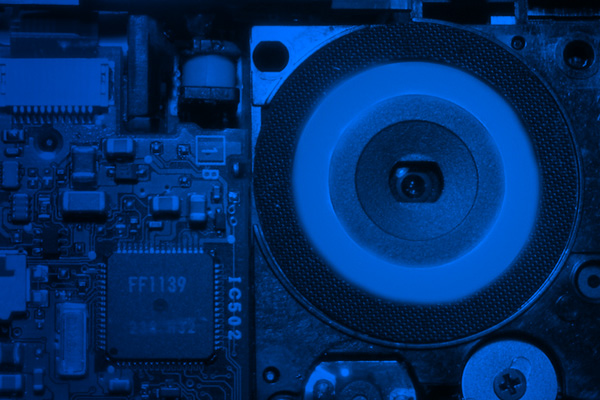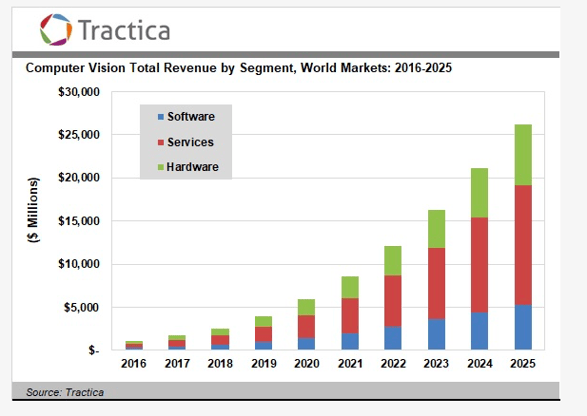Computer vision is garnering the attention of the public as well as the commercial sector, making it one of the fastest-growing sectors in the field of technology.
Given the potential diversity of applications, there may be no industry left unreformed eventually by this particular digital development.
Indeed, according to a report from Tractica, as an industry itself, computer vision is a domain which is gaining zealous momentum and is expected to drive hardware, software, and services market up to $26.2 Billion by 2025.
Why computer vision is essential for enterprises?
Whenever one looks at objects, people or images, the brain immediately starts examining and identifying familiar faces, strangers, based on the gender - a man or a woman, based on age - a child, an adult, or old and roughly on ethnicity too.
On the other hand, a computer can look at the same image and see nothing.
An area of computer science, computer vision infuse artificial intelligence to computers and let them see and comprehend to make an understanding. With that, it can recognize objects, faces, avoid obstacles and help people navigate.
It is a very fine amalgamation of machine learning, geometry, and applied maths.
Using digital images from cameras and videos and deep learning models, machines can accurately identify, classify, and extract insights from visual information such as scanning the barcode.
History of computer vision
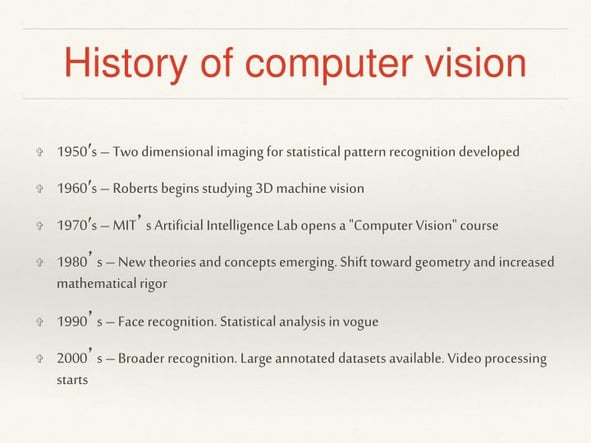
The experiments in the computer vision eventuated in the 1950s by using some of the first neural networks to find out the edges of an object and to categorize simple objects into categories like circles and squares.
Eventually, the year 1970 was marked as the starting point for the use of computer vision in commercial purpose. It interpreted typed or handwritten text using optical character recognition. This advancement was implemented to evaluate the written text for the blind.
The fast-paced internet in 1990 assisted in making large sets of images available for analysis which in turn, boosted facial recognition. The ever-growing data sets helped in making machines capable of identifying specific people in photos and videos.
There are multiple factors today that have focalized to bring about a revitalization in computer vision-
- Mobile technology with innate cameras has provided abundant photos to the world.
- Computing power has become economical and easily accessible.
- Hardware designed for computer vision and evaluation is readily available now.
- New algorithms like convolutional neural networks can take benefit of the hardware and software capabilities.
The effect of these refinements and advancements in the computer vision field has been astounding.
Accuracy rates for object identification and classification have spiked from 50 percent to 90 percent in less than a decade- and today’s modern system is ultraprecise and authentic at quickly detecting and reading to visual inputs, unlike humans.
How does computer vision work?
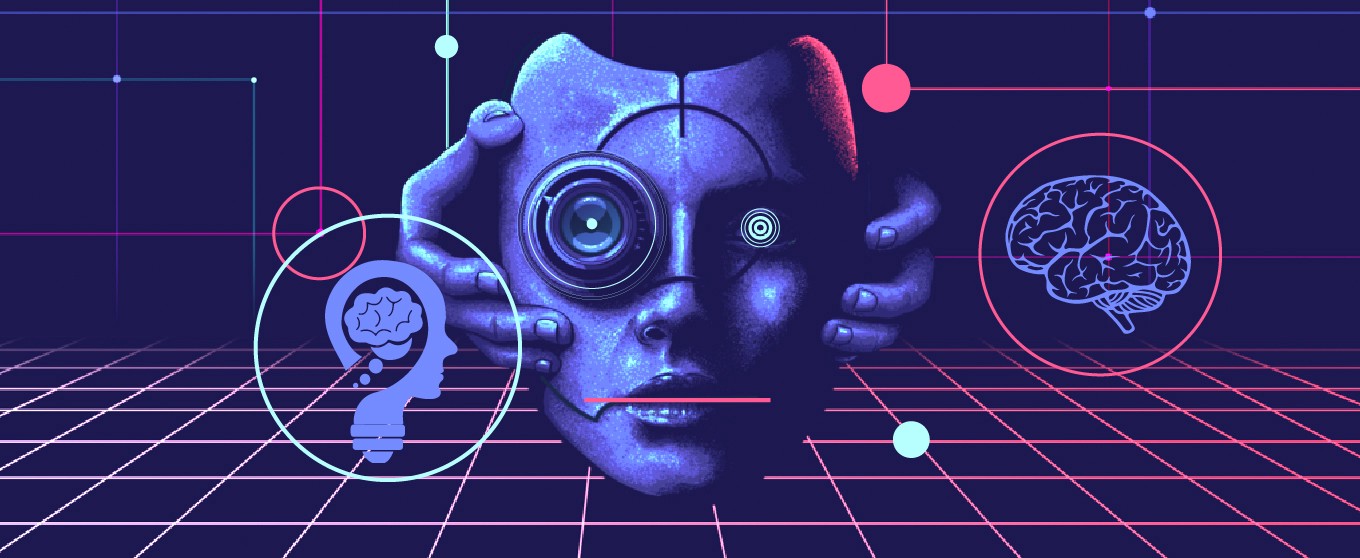
Computer vision works in three fundamental steps-
- Acquiring an image
Batches of images can be easily acquired in real-time through video, photos or 3D technology for examination purpose. - Processing the image
Deep learning modules drive much of this process. However, the models are often schooled by first being fed thousands of labeled or pre-identified images - Understanding the image
The final step involves the interpretation of the image, where an object is identified or classified.
AI systems hold enough potential to go a step beyond and take necessary actions based on the cognizance of the images. There are several types of computer vision that are utilized in different ways:
- Image segmentation walls off an image into multiple sections or pieces to analyze them separately.
- Object detection singles out a specific object in an image. Advanced object detection techniques diagnose many objects in a single image: a football field, an energetic player, a defensive player, a ball, and so on. These models use an X & Y coordinates to build a design box and identify everything inside the box.
- Facial recognition is an advanced version of object detection wherein it not only identifies a human face in an image but identifies a specific individual too.
- Edge detection is a technique that uses the outside edge of an object or landscape to exactly understand what is in the image.
- Pattern detection is a process that involves the identification of repeated shapes, colors, and other visual indicators in images.
- Image classification divides images into various categories.
- Feature matching is a pattern detection feature that matches similarities in images to help classify them.
Simple applications of computer vision may only use one of these techniques but more advanced ones, like computer vision for self-driving cars, count on the consolidation of multiple techniques to accomplish their goals.
Applications of computer vision
Be it data extraction, facial recognition, monitoring machine performance or detecting frauds, the usage of computer vision spans far and wide.
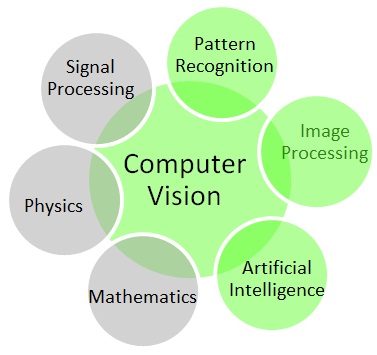
Versatility may be the key to the popularity of computer vision applications. This article highlights how they are used to improve business performance across industries.
Detection and Recognition
The ability of computer vision to identify the content of an image or a live video has eliminated the need for humans to perform certain optical tasks, such as recognizing a person’s face, objects, and other patterns. In fact, image recognition software has proven to be more effective as it has an infinite recall of any images that it can check against a database, even partially obscured faces!
Object detection, facial recognition, and product quality analysis to a large extent are some of the tasks that computer vision devotes itself to.
Amazon Rekognition and the controversyAmazon Rekognition relies on deep learning technology and computer vision to analyze the billions of images and videos in a fraction of seconds. It identifies the objects, people, text, scenes, and activities as well as detects any inappropriate content stored. This tool can be deployed in facial analysis and facial recognition on images and videos for a wide variety of user verification and public safety use cases. However, this Amazon Rekognition brought forth a controversy which hinted at the use of this tool by multiple US law enforcement agencies contrary to its specified use. As per the reports, some police departments and other organizations, have been using facial recognition technology for years now but the disclosure was still enough to raise questions about Rekognition’s capabilities, and how it might be used or who exactly was using it. Especially in a case where it wrongly identified 28 of the lawmakers with people who had been arrested, amounting to a 5% error rate among legislators. These proceedings violated the rights of immigrants, communities of color, protesters, and others; putting them at risk since Amazon continued providing the powerful surveillance system to government agencies. |
Object Detection
The object detection principle can also be implemented in retail stores. Amazon’s Go store is a prime example of how computer vision can revolutionize retail. This Go store is packed with cameras where the video is fed to computer vision software to understand the behavior of shoppers and accordingly suggest them items based on their preferences. This way, it also keeps a complete track of running inventory of the customers’ shopping basket.
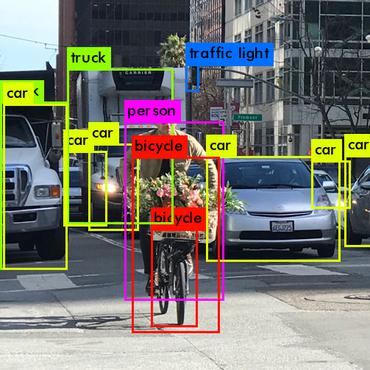
Unlike conventional ubiquitous checkout process, the advanced analysis of moving images enables Go shoppers to ‘simply walk out with their purchases, and pay for them online via their Amazon accounts’.
Tesla
Tesla’s autopilot vehicle models come armed with all the resources like ultrasonic sensors to help cars detect trees, buildings, other vehicles, and even pedestrians on the road. Its camera system, called Tesla Vision, embraces vision processing tools to break the environment components (not literally!) and navigate the car through complex roads smoothly and efficiently.
Facial Recognition
A similar concept is being used in smartphones and digital cameras. Whether it is to tag photos on Facebook, or applying Snapchat filters; facial detection is extensively used application of computer vision.
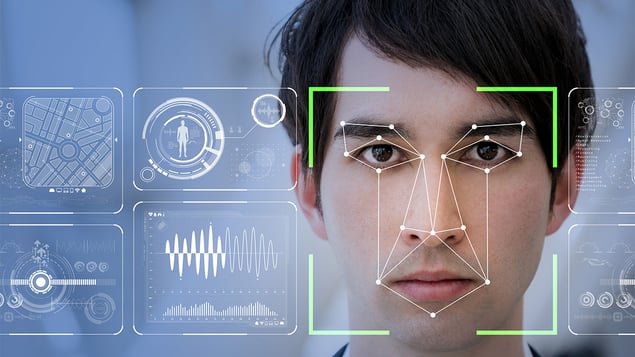
Alternately, it can become adept in surveillance measures to scan the face, fingerprint and biometric of security personnel or employee in an office building.
This facial recognition feature can also be introduced in the logistics environment as there is always the risk of warehouse break-ins and truck hijackings resulting in huge financial losses and operation failures.
Facial recognition feature will only validate authorized operators to link to truck immobilizers, making it difficult for thieves to sneak off with goods, or for untrained operators to place themselves and others at risk.
Lolli & Pops
This candy retailer uses facial recognition technology in its store to identify frequent shoppers or visitors as they walk into the store.
Thus employees are able to provide a personalized shopping experience for them, giving product recommendations and occasional loyalty discounts.
Smart Mirrors: Improved Customer Experience
In fashion retail also, smart mirrors are used by combining AR and computer vision along with cameras to enable face any eye-tracking. These enhancements make sure that whenever shoppers try on outfits virtually, the image in the mirror is depicted accurately from every outlook, increasing the authenticity of the experience.
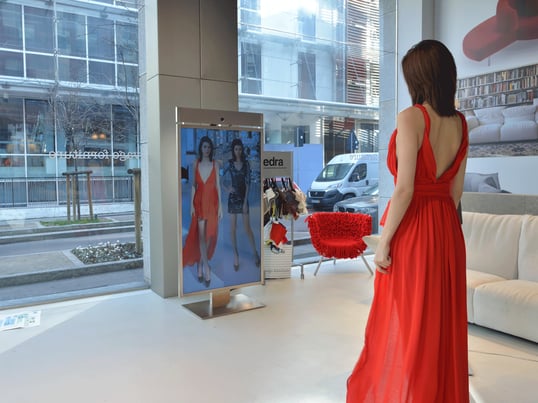
Further, these smart mirrors also strengthen security by confining the ability of shoplifters to disguise items away on the pretext of trying them on in the fitting rooms.
IBM Watson Visual Recognition
The IBM Watson Visual Recognition service utilizes deep learning algorithms to evaluate images for scenes, objects, faces, and other content.
This visual recognition analyzes the content of images to provide you insights into your visual content.
You can also create and train your custom image classifiers with your own image collections. Its use cases include manufacturing, visual auditing, insurance, social listening, social commerce, retail and education.
Fraud Detection
Srijan’s RPA solution enables automated KYC process for the BFSI sector. It uses processing technology to read, validate details on the respective documents as well as scan and match photographs. Hence, it can detect fraud by verification of passports, ID cards, licenses, etc. It can also be incorporated into product cataloging and outlier detection.
Watch this video to understand better-
Stoplift
Computer vision can reduce theft and other losses at retail chains. StopLift makes use of its product ScanItAll for the same. It can find out checkout errors, such as hiding the barcode, accumulating items on top of one another, skipping the scanner and directly covering the commodities.
Smart Verification Software
Mitek’s identity verification software is a cloud-based platform that utilizes AI technology, computer vision, machine learning and deep learning. It ensures that government issued identity documents around the globe, like passport, ID cards, and driver’s licenses, are authentic and valid.
It can simultaneously complete the equivalent of hundreds of forensic check permutations in a fraction of seconds.
Product Defects & Quality Issues
Fujitsu’s Oyama factory uses computer vision to ascertain the production of optimal quality products as well as scrutinize the assembly process.
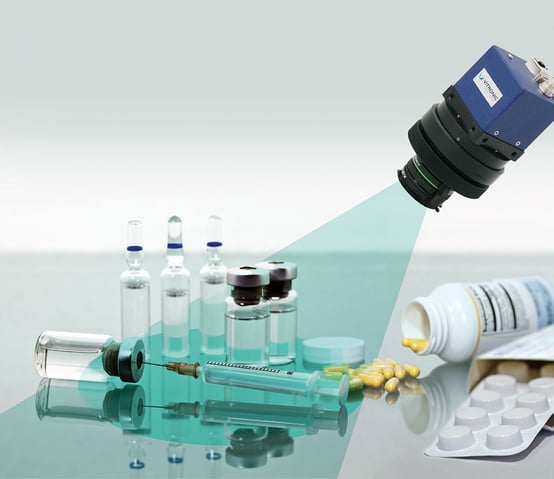
Shelton
This manufacturing firm has a surface inspection system called WebSPECTOR to identify defects, store their images, and detect it among those items which are negatively impacting the production line.
Computer vision plays multiple roles in manufacturing line which can differ from identifying quality issues in supplier parts, defects in leather for footwear manufacturing, checking component presence, and installation process on electronic circuit boards.
Data Extraction & Analysis
Quickly sifting through a data repository, and extracting useful information from images, videos, and documents is another important function of computer vision. This faster and accurate analysis helps in making better decisions in healthcare, agriculture, and other sectors.
Image Processing
Gauss Surgical
This healthcare firm has designed blood monitoring solutions to evaluate the estimated blood loss in real-time during critical medical situations. It utilizes the computer vision to increase blood transfusions, and identify hemorrhage better than the human eye.
Cainthus
It leverages technology to identify cows, based on hiding patterns and facial recognition, and track their food and water intake, heat detection, and behavior patterns. This collective information is then sent to farmers who make predictions about milk production, reproduction management, and overall animal health.
Computer vision applications in agriculture
The practice of using image analysis technology and computer vision has eased the task of monitoring cattle, identification of health issues, such as lameness, which can impact milk yield.
This will notify farmers much earlier than traditional human visual inspections, enabling treatment to be administered way before animals start to suffer unduly and their milk yield reduces.
Computer vision applications have also found their place in arable agriculture and horticulture, where it can visually detect harvest, mainly fruits, vegetables, and nuts & grade them by color, size, and condition.
Consequently, it will save enormously on the cost of such operations as they’ll become less labor-intensive.
Data Extraction from Images
Computer vision can ease data extraction even through PDFs. A good PDF extractor can easily distinguish between the headings, subheadings, color, font size, footnotes, and graphs. This action helps PDF extractor in retrieving relevant and useful information which is human-error free and can be taken into account for further making decisions in different scenarios.
Building a PDF extractor
Srijan built a PDF extractor having capabilities ranging from extracting the model number, description, to language from a PDF file. It can also extract images or tables from the PDF, and also align them against their relative serial numbers.
Video Analytics
Computer vision in video analytics can aid in finding the velocity of objects in a video, or in the camera itself. Alternatively, it can create a 3D model of a scene fed through a video. That makes it very useful when it comes to self-driving vehicles. It can also be used to monitor a stream of real-time video to identify anomalies in process, mostly complex manufacturing assembly lines or fine mechanical processes.

Asset monitoring for cleaning solutions enterprise
The enormous cleaning solutions company incorporated video analytics solutions to detect and verify the machine performance at any given location. A real-time video of the machine was recorded, followed by scraping the video feed data and its automated analysis to evaluate the machine performance.
Merged Reality
When AR and VR are used in combination with computer vision, it is called a merged reality - the next stage of development, where:
- External cameras and sensors the environment
- Eye-tracking solutions and gyroscopes position the user
This further helps AR & VR systems to:
- Provide the guidance and directions
- Save users from hurdles
- Detect eye and body movement of the user, and adapt the VR environment accordingly
Sephora
Their Virtual Artist app now integrated with a live 3D facial recognition let customers see how different makeup products look on their faces, in different light conditions.
Users can simply point their smartphone’s camera at any text, and the Google Translate app will translate it to another language on the screen instantaneously. This is a form of AR in association with computer vision to enable such accurate translation in an instant.
In combination with drones
Computer vision can be leveraged in combination with drones where the task is difficult for humans and involves great risk. This could be-
- Tracking vehicles and inventory at huge construction sites
- Creating maps for navigation purpose
- Site surveys to get an update about the location for the development purpose
Slantrange
They utilize computer vision equipped drones to measure and monitor the condition of crops. The images photographed by drones are forwarded to the SlantView analytics system, which analyzes the data and helps farmers make decisions accordingly.
Insurance Industry
Computer vision in the insurance industry can help in analyzing the damage of assets under policy to decide whom should be offered coverage.
Thus, drones can be used in capturing the image and uploading to the Cloud. Now if this validates the claim of the customer, they will receive the payment. This entire series of tasks can be automated with the help of computer vision.
Computer vision is highly efficient in providing direct benefits to users by reducing development times and creating an end-product that meshes with what the user wants and needs to do. Developers can now easily rely on AI and ML to identify major patterns and hence bestow users with more tailored user-friendly products.
It’s a humongous step towards designing an invincible technology that adapts to users’ needs instantly and predicts their future needs with uncanny accuracy.
The potential of computer vision will only grow with time!
Our Services
Customer Experience Management
- Content Management
- Marketing Automation
- Mobile Application Development
- Drupal Support and Maintanence
Enterprise Modernization, Platforms & Cloud
- Modernization Strategy
- API Management & Developer Portals
- Hybrid Cloud & Cloud Native Platforms
- Site Reliability Engineering


